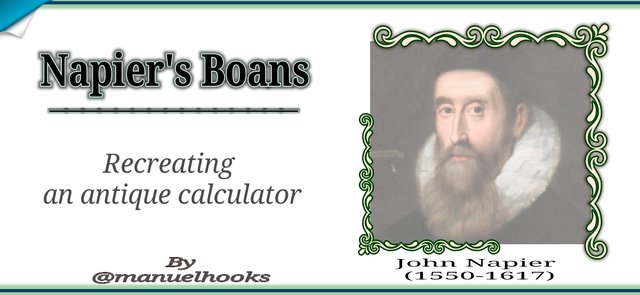 Picture Source, Edited with Photo Studio
Picture Source, Edited with Photo Studio
Napier's bones An Antique calculator
John Napier has always been credited for inventing the logarithm table, but that was just one of his numerous works. When considering the Evolutionary chronology of computing devices that resulted in the modern Computer, John Napier's calculating device known as the Napier's Rod, popularly called Napier's bones often comes after the Abacus and the logarithmic table.
The Napier's bones was basically created to perform multiplication operations, though it could help in division operation.
Like the log table, the Napier bones uses simple addition operation to solve multiplication problems. The Napier's bones can be used in combination with the Abacus to easily multiply a number with multiple digits by a number beyond a single digit.
This has been very helpful to children in situations where calculators are not allowed.

Recreating the Napier bones
Needed items
| S/N | Item | Description |
|---|---|---|
| 1 | Hard card | to draw on |
| 2 | Ruler | drawing lines |
| 3 | Pen | writing numbers |
| 4 | Cutter | Scissors for cutting |
| 5 | Housing | to hold the piece |
| 6 | Glue | gluing |
Draw a table
- The table should be 10 x 10
- Each cell should be a square
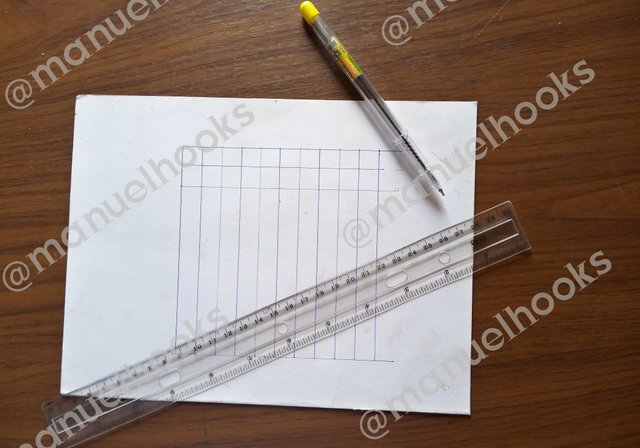
- A 10cm X 10cm is recommend
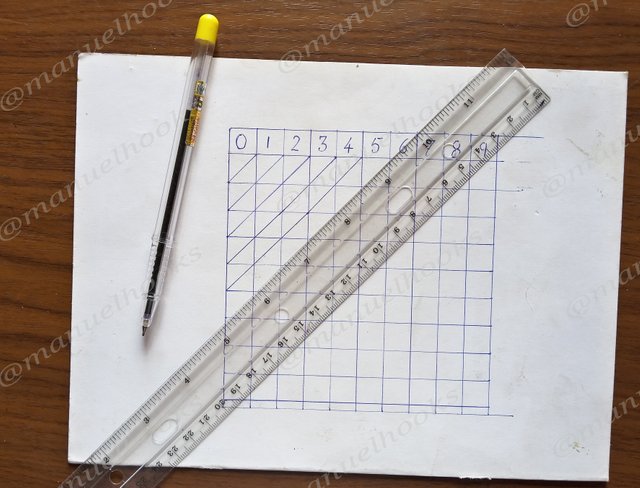
- Draw a diagonal line across each cell exempting the first row
Fill in the Multiplication table

-Number the columns from 0 to 9
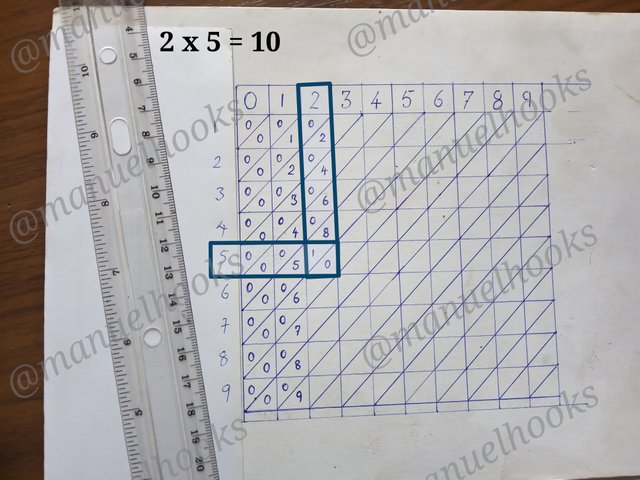
- Number the row from 1 to 9
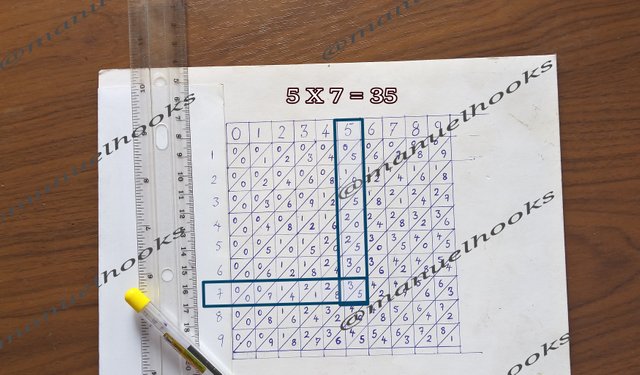
- Do the Multiplication and fill in the results
Cut out each column
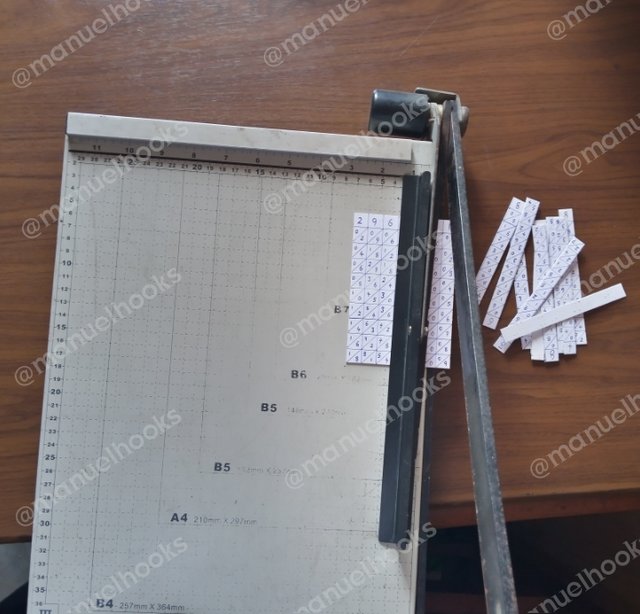
- Cutting out the columns
Housing the columns
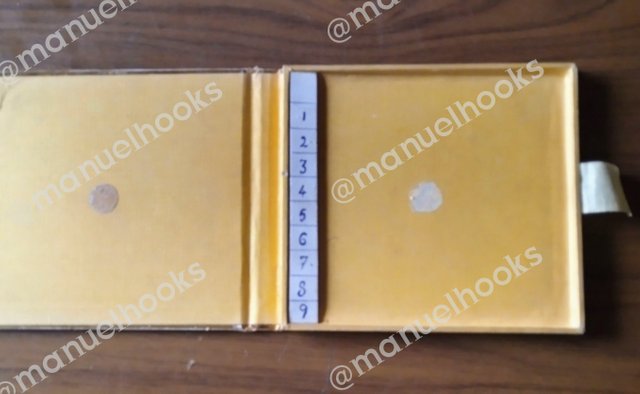
- The bones are housed in an old DVD case with the row headings glued to the case.
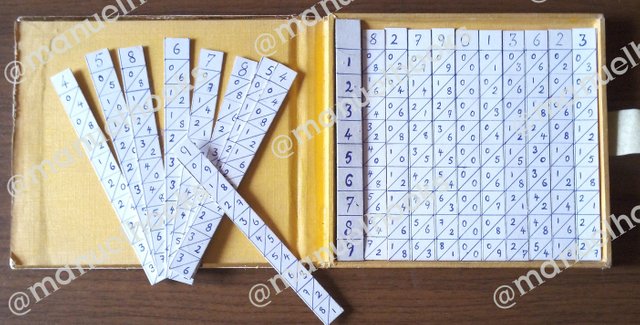
- the complete device
Calculating with the Napier bones
Let's start by solving 4216 multiplied by 4.
This will require 4 piece
the 4, the 2, the 1 and the 6.
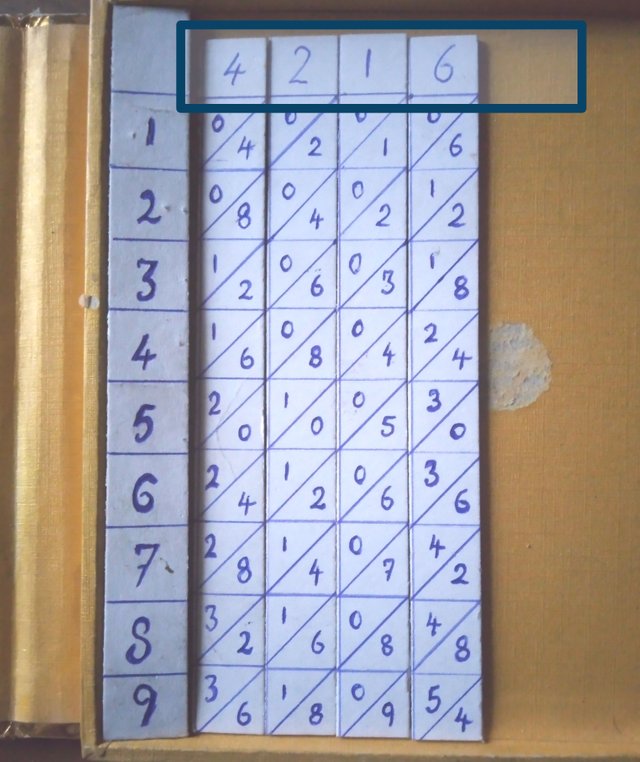
- Arrange the individual piece to form the number to be multiplied.
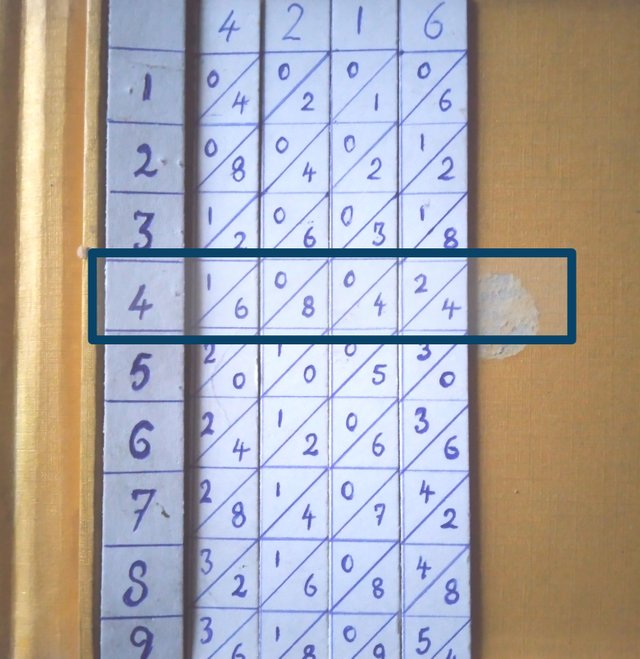
- We will concentrate on row 4 because we are multipling by 4
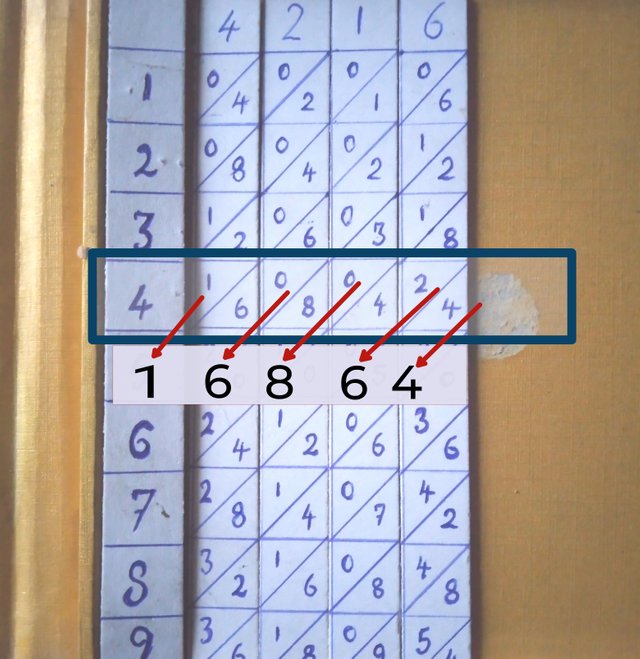
- Now we are to add and write down the value in each diagonal column
4216 X 4 = 16,864
- What we have after the addition, is the solution to our multiplication problem.
| S/N | Item | Particulars |
|---|---|---|
| 1 | Captured by | @manuelhooks |
| 2 | Device | Nokia 2.3 |
| 3 | What3word | ///hiding.fruits.decades |
| 4 | Co-ordinate | 5.038090,7.923240 |
| 5 | . | . |
Impressive, I love the breakdown. But I still need to go through it again to understand it perfectly. I also need to show it to a kid around my area, I know she will love it.....
Thank you for sharing.......
Downvoting a post can decrease pending rewards and make it less visible. Common reasons:
Submit
@ninapenda You could ask questions for clarification before presenting it.
What point or part needs explaining?
Downvoting a post can decrease pending rewards and make it less visible. Common reasons:
Submit